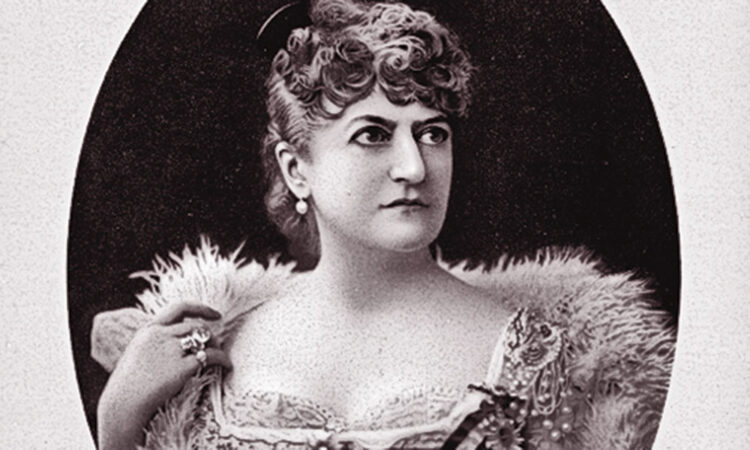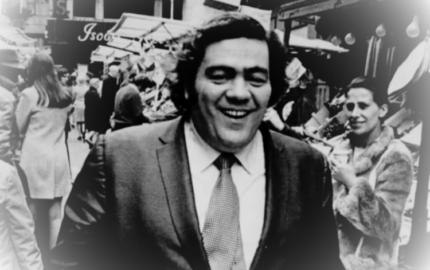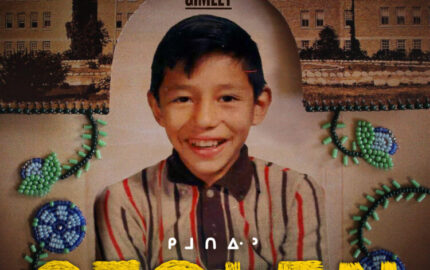Can the past teach us anything? Is there a reason beyond “oh, that’s interesting/ quaint/awful/who knew?” to delve into the lives of journalists who did their work before we were born, perhaps many generations before we were born?
In a word: Yes.
Here’s an analogy that may illuminate my thinking (or leave you scratching your head). I love to watch truly bad movies. Z-grade, as they are called. When you remove the glitz and glitter, the sophisticated patina, the layer upon layer of post-production magic, you can see how movies are made. You can study lighting and sound, camera angles and editing. It’s all laid bare.
Here, in what you will read below, is journalism laid bare. Here is a story of reporting that broke news before the invention of any technology we take for granted today to cover events as they happen. No Googling for quick answers or context. No Twitter to tap into ongoing conversations and identify sources. No smartphones. No phones. No printing technology to reproduce photographs. What remains?
Quick thinking. Energy. Ingenuity. Agility. Commitment to getting it right. Commitment to readers. Teamwork. Here we see what journalism, at its core, is all about.
And this bonus: I want to introduce you to an astonishing (and long-forgotten) woman whose importance to the journalistic enterprise is inarguable. She is not one of the very few female icons — Nelly Bly and Ida Tarbell come to mind —although her last name, Leslie, may be familiar to some. I should say one of her last names. This force of nature, a 19th century boss who remade an empire, went through four husbands. Let’s join her as she practices journalism laid bare 142 years ago.
Inheriting a news empire and a big news story
On the morning of July 2, 1881, the news came across the telegraph wires that President James Garfield had been shot. This was a time when a president of the United States could walk the streets unaccompanied by either bodyguards or an entourage. Garfield, who had taken office less than four months before, strolled from the White House to the Sixth Street Baltimore and Potomac Railroad station. There, in the waiting room, he was shot from behind at point-blank range. The first bullet grazed his shoulder. The second just missed his spinal cord and lodged itself behind his pancreas. When Miriam Leslie heard the news, she literally stopped the presses.
It had been barely 18 months since she had taken over as head of the Leslie media empire, which included the flagship publication Leslie’s Illustrated Newspaper, a weekly founded by her husband Frank Leslie in 1855. This was a time when newspapers were the sole sources of information about national life, when magazines mapped the cultural landscape, when the artists’ renderings and woodcuts in those pages were how people saw the world, when many important books were first published as serials in the journalistic publications of the day. Later Scripps, Hearst and Pulitzer would build reputations as media moguls, but first there was Frank Leslie — and Mrs. Frank Leslie — who led and fed the industry.
Mrs. Leslie’s given name was Miriam.
Frank, her third and now deceased spouse was the celebrated success of Publishers’ Row, the Manhattan district that was the 19th century epicenter of newspaper and book publishing. That was his public image. But upon his death he left behind a business in shambles and almost $8 million in debt (more than a quarter-billion in today’s dollars). Creditors were demanding an immediate payment of $50,000.
Within days Miriam, clothed in black silk and shod in silver-tipped black kid leather slippers, was sitting behind her husband’s expansive desk in her husband’s old office on the top floor of an impressive five-story building at 57 Park Place in lower Manhattan. There she looked out over the main editorial room where on one wall was mounted a large bronze medallion of the man himself. She was now in charge of seven publications, 16 printing presses and 300 employees — engravers and artists, writers and printers, telegraph messengers, drivers and salesmen — and a mailroom that took up an entire floor of the building. She was poised to become the most powerful woman in publishing.
But first she had to save the business. (History records that Miriam briefly changed her name to Frank when she entered the male world of business. History also records that she had an active and unapologetic sex life, and was a suffragette.)
To keep the creditors at bay, she engineered a $50,000 loan from a wealthy widow, using her own remarkable jewelry collection as collateral. Then she efficiently — some said ruthlessly — overhauled every department in the publishing empire that was now hers. She pared the list of Leslie publications. Fewer publications, each with increased readership, was her plan. She commissioned a decorative new cover for the Illustrated Newspaper, improved the quality of its printing stock and its woodcuts and sought new writers. She worked 10-hour days, returning at 8 in the evening not to the sumptuous apartments she and her third husband had occupied but to what she later described as a “carpetless flat” where she “knew what it was to be cold and hungry.”
Within 18 months of her husband’s death, she stunned Publishers’ Row by winning the lawsuits that threatened the Leslie estate, paying off his debts and expanding the circulation of the Leslie publications from 30,000 to 200,000. She did this, breathing new life into a severely compromised enterprise, by seizing a dramatic moment in American history, a moment that gripped the nation for almost three months. She did this by pioneering a new approach to the news, an immediacy we take for granted today but was not part of the 19th century world of journalism.
A bold approach to big news
On the morning of July 2, 1881, reading the telegraphed news of the attempt on President Garfield’s life, the latest edition of Leslie’s Illustrated Newspaper was already in production. Miriam ordered a halt to the presses and pulled it. Within an hour, she dispatched two artists to Washington, one of whom returned to New York on the midnight train with sketches both had prepared. Miriam wrote, edited and formatted a new front page.
Two days later — lightning speed for the day — the newspaper was on the stands with double-page illustrations and full coverage of the tragedy. And for the 79 days that the president lay dying, first in the sweltering heat of the White House, then propped in a bed by an open window in a house on the Jersey shore, the newspaper covered the saga with reporters and artists on the scene.
Garfield’s condition fluctuated. Fevers came and went. At the White House, in the sick room, Navy engineers rigged up fans that blew air over blocks of ice to reduce the summer heat. Doctors probed the president’s body with unwashed hands and unsterilized instruments to try to locate the bullet. Alexander Graham Bell devised a metal detector to help find the bullet. (Garfield’s metal bed frame made the instrument malfunction.) The robust president’s weight dropped from 210 to 130 pounds. Through the entire, extended ordeal, the American public followed it on the pages of Leslie’s Illustrated Newspaper. When the end came, Leslie’s covered Garfield’s funeral procession and services with as many illustrations as it could make room for.
A journalistic style that endures
Miriam Leslie had saved the Leslie media empire. She was heralded as a “commercial Joan of Arc” and the “Empress of Journalism.” She was called “the planet star among women in public life.” She was one of the first female power brokers in America, a media mogul, a financial wizard, a globe-trotting journalist, a bestselling author, a cultural icon, and an “ill-behaved” woman who made her way to the top at a time when women were virtually invisible in public life — except when on the arm of a man.
But her enduring legacy to us is that she ushered in a new age of of-the-moment, you-are-there journalism. The journalism she pioneered, practiced, and polished — on-the-scene, in-the-moment, heavily illustrated — is now a fundamental part of story work, in many forms and on many platforms.
* * *
Lauren Kessler is an Oregon-based narrative journalist, teacher and author of 15 books. This post was based on her continuing research into Miriam Leslie for a possible biography. Her interest was first inspired by "Purple Passage: Life of Mrs. Frank Leslie," published 70 years ago.



